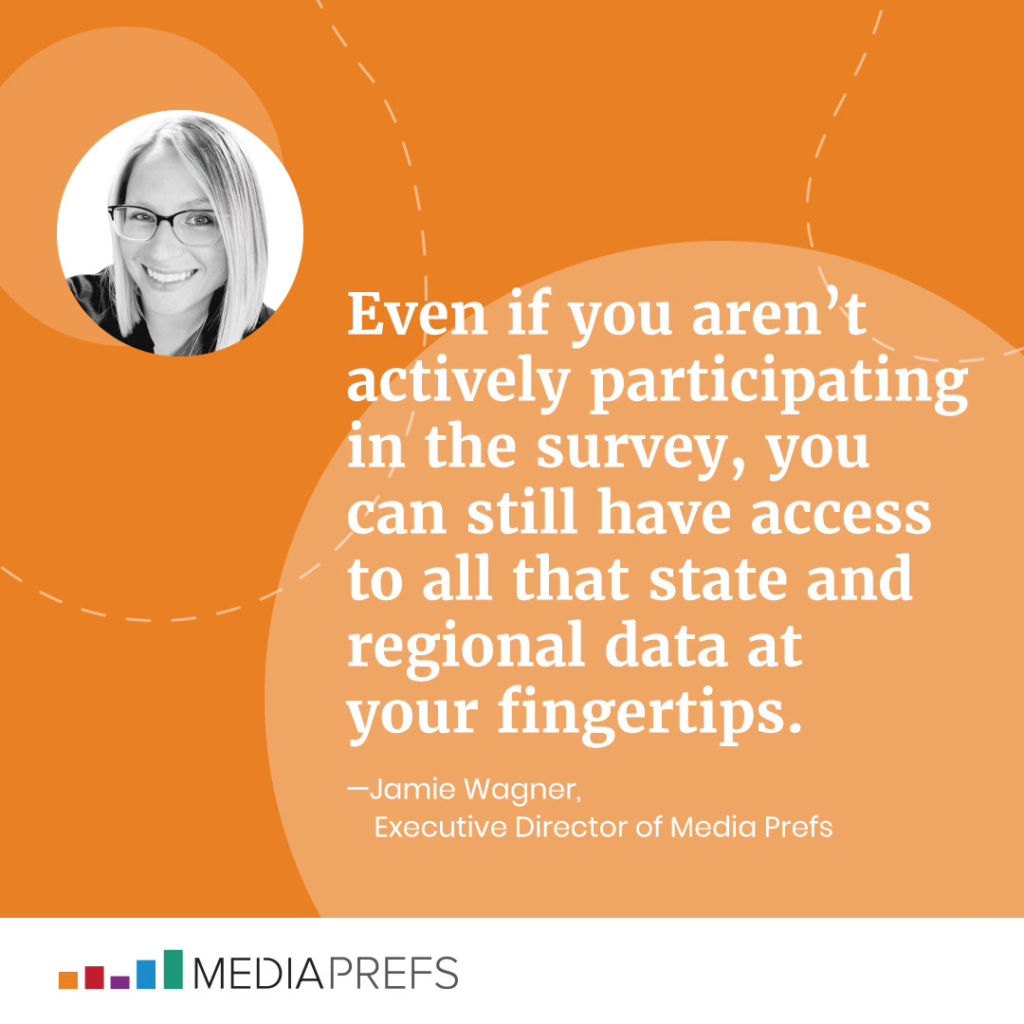Smarter marketing and savvier strategies begin with real research. Eliminating the guesswork from your marketing plan is crucial to reaching and engaging with students.
So how do you reach the right audiences …
On the right channels …
At the right time…
With the right message?
That’s why Interact created the Media Prefs research tool — to make reaching prospects easier, boosting enrollment and ROI.
16 Years of Helpful Data [How Media Prefs Works!]
In fact, this year marks our national Media Prefs survey’s “sweet 16.” For 16 years, Media Prefs has been dishing up the data community college marketers need to help students enroll and persist.
“When Media Prefs first started, students took paper surveys, and colleges would receive a DVD by mail with their data,” recalls Jamie Wagner, executive director of Media Prefs. Then, in 2012, the platform went digital with software we custom-built for interactive research. Says Wagner, “It allows us to get data into people’s hands quicker and in a very cool visual format they can interrogate.”
Fast-forward to 2022: Media Prefs just underwent yet another upgrade with a brand-new, easy-to-use portal. Plus, the team is currently rebuilding the survey engine to allow for expanded opportunities and flexibility for the future. And best of all, the tool continues to be free.
Now, 2022’s most useful Media Prefs data bites for smarter marketing are at your fingertips! We’re rounding up the most popular and helpful data of the year in this blog to put the power of student media preferences in your hands. Ready to get started?
The 8 Top Tips for Smarter Marketing, Student Outreach, Advertising, and Messaging
1. Don’t Leave Students Hanging!
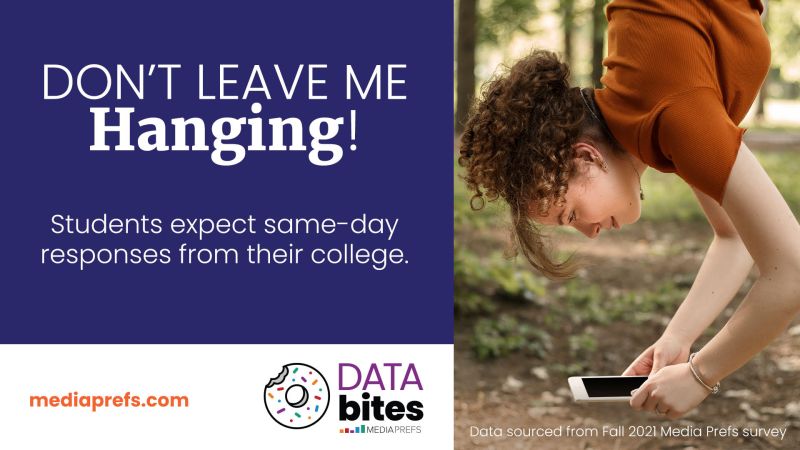
Students live in an on-demand world where most information is available and accessible instantly. Our online and on-time world greatly impacts learners’ patience and expectations across communication channels.
Email …
Voicemail …
Web inquiry …
Social media messages …
Students expect your response ASAP — usually the same day.
“Long gone are the days when college admissions offices could batch-send emails during busy times and take one day to return student messages,” says Wagner. “Our data has certainly shown that students expect responses back the same day. And there’s always about 10% of students who want that response back within the hour.”

The quick response time is especially true for email and voicemail. But for social media posts or inquiries from an online website form, students are typically okay with giving you an extra day to respond, or even two to three days in rare cases.
“As a general rule, a same-day response is the best practice if you can manage it,” says Wagner. “But definitely prioritize returning email and voicemail first.”
2. Don’t Forget Your Financial Aid Outreach!
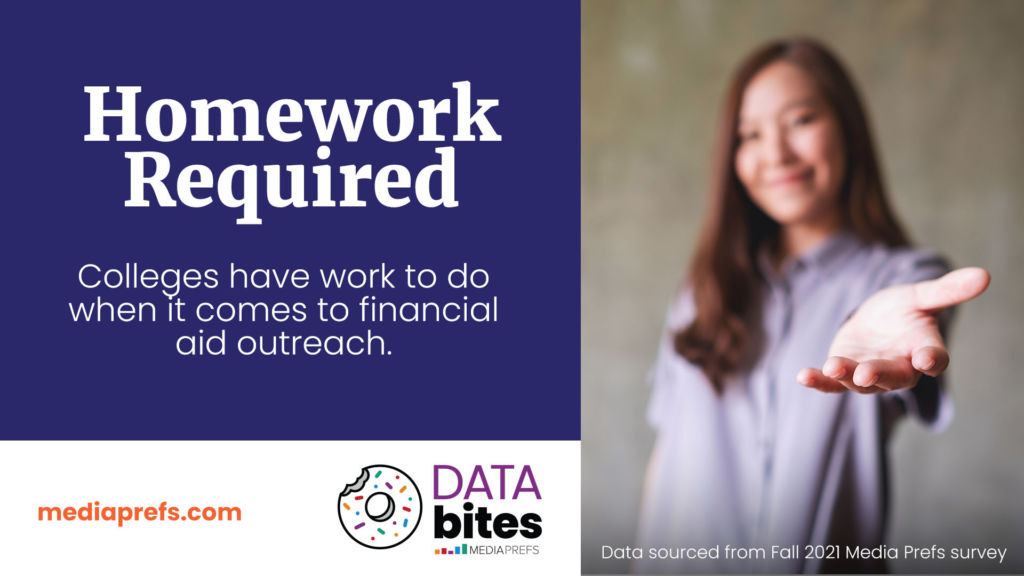
When it comes to financial aid outreach, colleges have a lot of homework to do.
It might surprise you that nearly one in three students nationwide expressed that their college is ineffective in communicating their financial aid options.
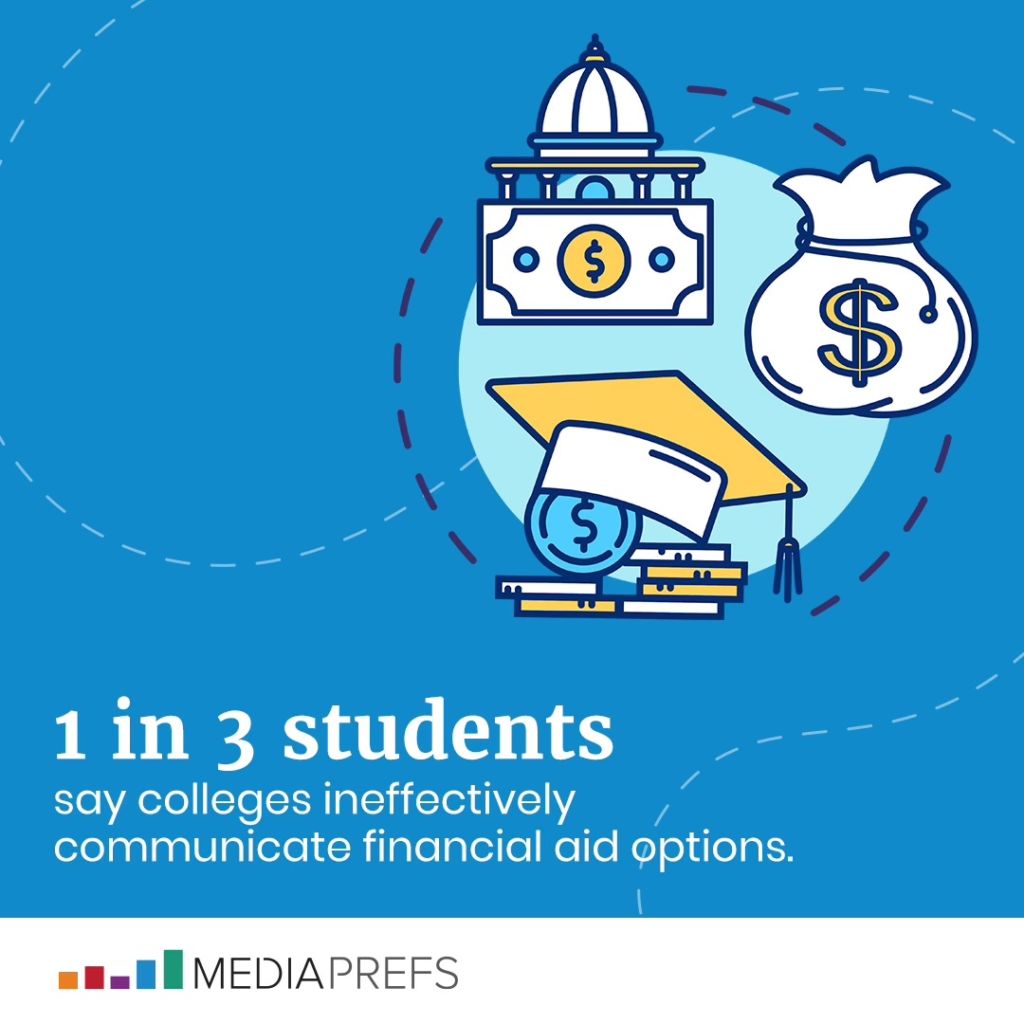
“Overall, colleges are not as effective in communicating financial aid opportunities as they could be,” says Wagner.
Want to boost enrollment this coming semester? Then try taking a closer look at how you’re informing students about lightening their financial load for smarter marketing and outreach.
Payment woes lead too many learners to stop out. Instead, let students know what they are eligible for and how to secure it.
“If you can create short text or videos explaining the process, that’s how a lot of students would prefer to get the information — in bite-sized pieces,” says Wagner. “Small bites are much simpler to understand than four pages of detailed instructions for every single thing related to financial aid eligibility. That’s going to decrease their confidence and overwhelm them.”
3. Social Media After Hours for Smarter Marketing
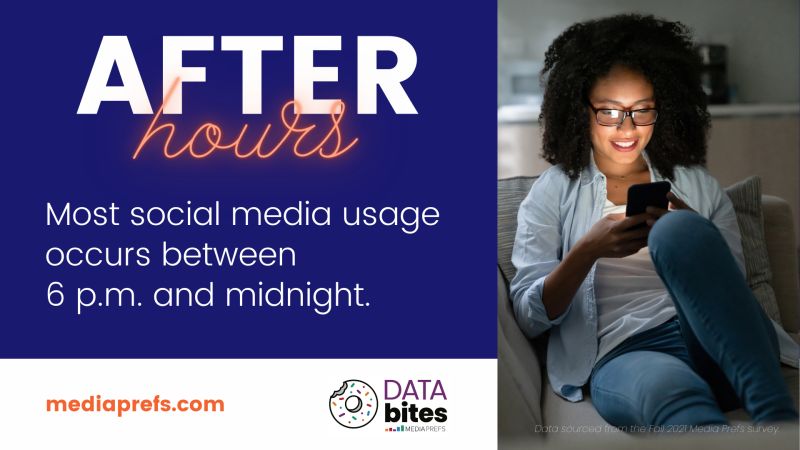
Are you ready for our #1 social media data bite? Drumroll, please.
Did you know that students use social media the most between 6 p.m. and midnight? That’s a lot of connection time you might miss!
You could reconsider your social media staffing and strategy to boost your engagement.
“If you’re lucky enough to have a social media manager, try flexing their hours a bit to be more engaged when students are online,” says Wagner. And if you don’t have a dedicated social media manager? “Be sure to schedule some posts for the evenings to meet them in real time. Just make sure to respond to questions and engagement ASAP in the morning. Again, students want as quick of a return response as possible.”
For even more social media data bites, check out Social Media: 6 Things Students Expect To See on Your Accounts, Revealed!
4. Is Local News a Snooze? Maybe Not for Your Older Audience
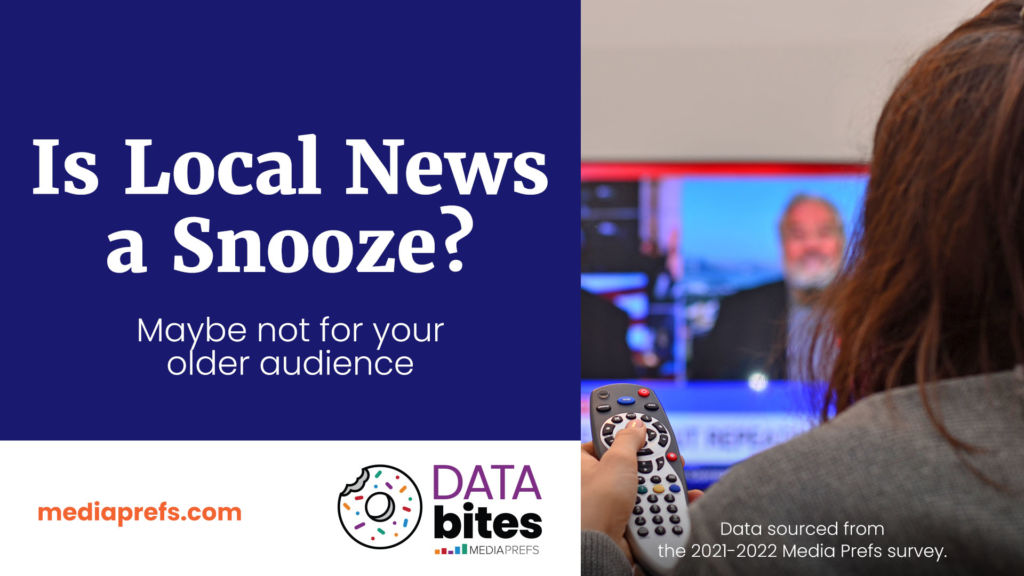
We love it when our colleges make the local TV, but are your students catching the news?
It’s true that more than half of students 16-30 say they “never” watch the local news on TV. But don’t discount older students — especially when it comes to early morning and evening coverage when they’re most glued to the tube.
“Live TV is tricky. For most, I wouldn’t spend too much time or money on live TV for younger audiences. They’re just not paying attention there,” advises Wagner. “But if you have something newsworthy, or an event you’re trying to promote to an older audience, that’s something you should talk to your news connections about to get that earned media.”
Marketing for a rural college? Check your data! Younger audiences in rural communities tend to still be tied to local TV stations. The same goes for traditional radio, where more are tuning in regularly.
There’s only one way to leverage smarter marketing. Says Wagner, “Start with the data, and take note of what your students are saying.”
5. Prime and Prejudice: Where Are Students Watching the Latest TV?
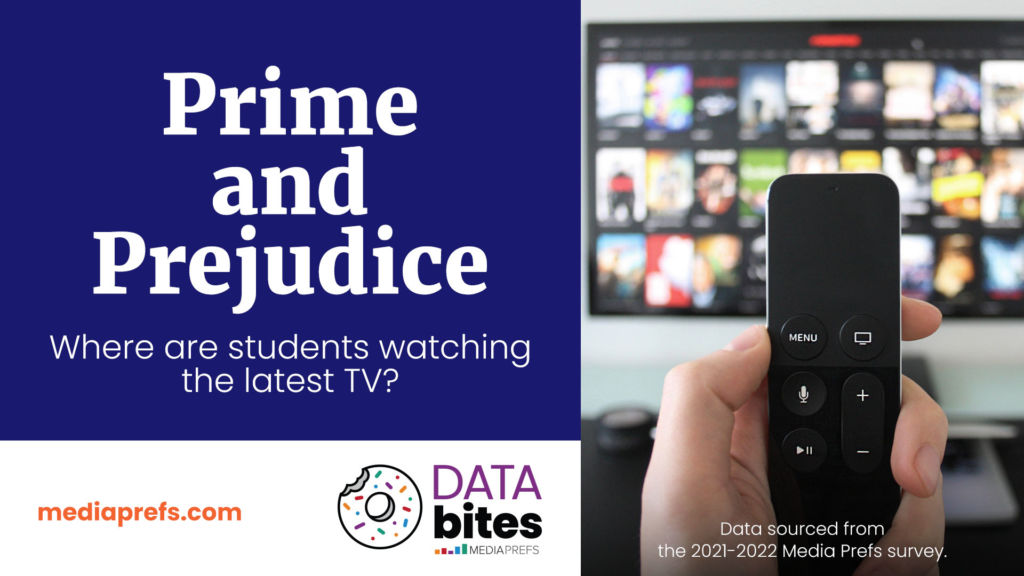
Where are students catching the newest episodes of Obi-Wan Kenobi and Ms. Marvel — and most importantly, where should you place your ads?
Real TV (think antenna and cable hookups) is best reserved for students 51+, where more than half are watching their favorite shows.
Meanwhile, the biggest streamers of television are aged 26-30. Nearly 70% say it’s their go-to for tube time.
“Netflix is still the top platform for streaming, and it has always been a place where we couldn’t directly reach students … until now,” effuses Wagner. “With these new advertising possibilities, it’s going to be very interesting to see who you’ll be able to reach with Netflix, especially for the younger streaming audiences. Nearly 75% of Gen Y and Gen Z students are Netflix subscribers.”
Well-placed ads across the appropriate channels can greatly impact your outreach, so check your local Media Prefs data to choose the best locations!
6. Students Listen to the Music … But Are They Catching Your Ads?
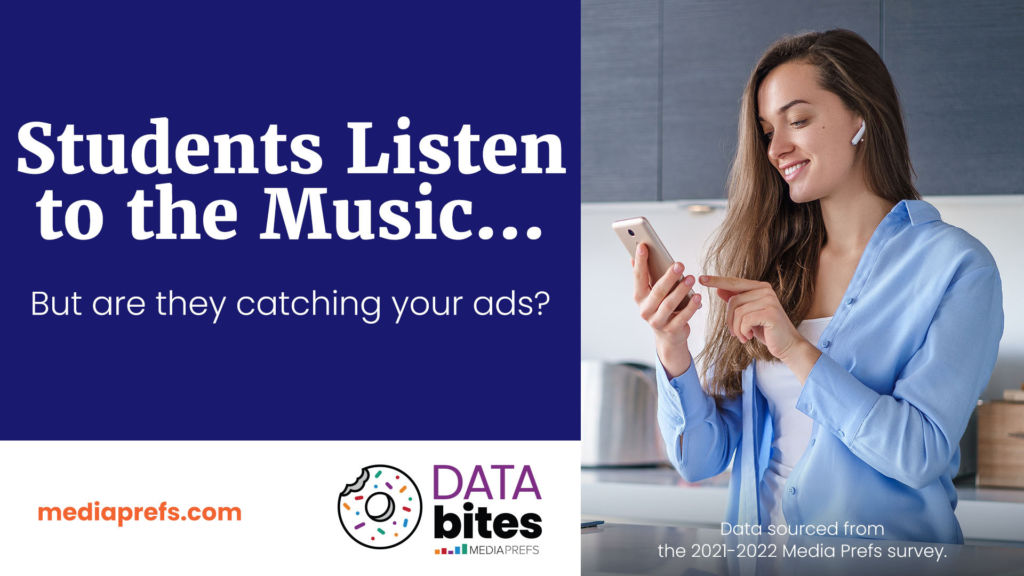
Spotify, Pandora, Apple Music … Students are streaming the music, but who’s paying to remove the ads — and missing your messages?
While it’s a 50/50 split nationally over who opts for premium, it turns out that reaching nontraditional female students on music streaming platforms is still a strong bet.
Females are more likely than males to keep the music free with ads turned on. And while students aged 18-30 show a stronger preference for going premium, only one in three students aged 31+ pay to remove ads on streaming music sites.
“For a long time, it was really only Pandora and Spotify. Pandora seemed to skew in favor of older audiences, and Spotify typically skewed younger,” says Wagner. “Now, those older audiences are migrating not only to Spotify, but to YouTube, Amazon, and Apple Music as well, giving marketers more opportunities to reach them. With Spotify being a strong contender overall, it would be great addition to a college’s mix because of its targeting functionality.”
7. You’ve Got Mail! Students Prefer College Email for Most Info; Text Is the Next Best
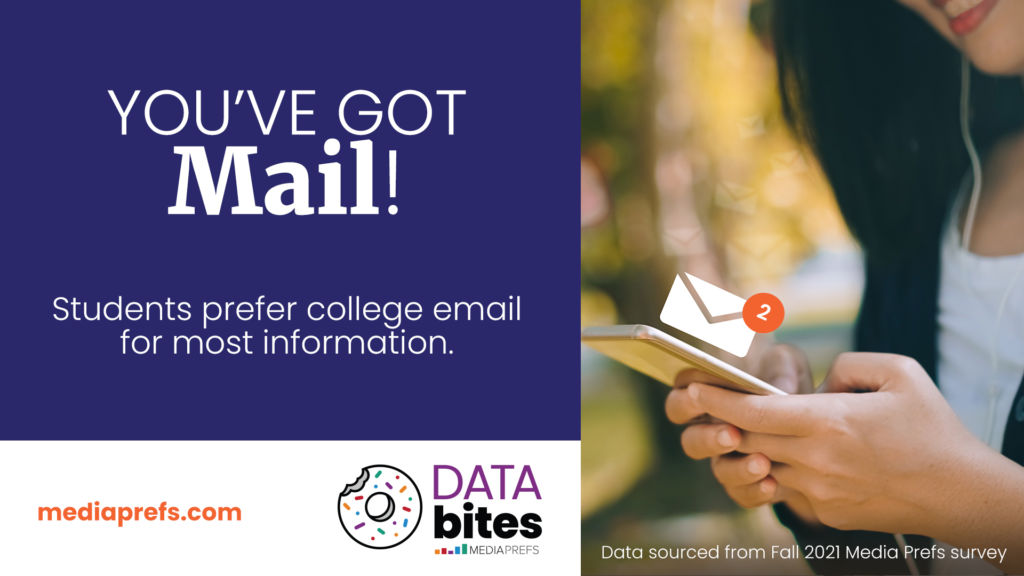
Good news for smarter marketing strategies: Despite what you may think, students really do read your emails.
- Most indicate they check their college email at least once a day.
- Many say they check a few times a day.
- And nearly 20% check their email every time they receive a notification!
Students prefer to get most college information via email, except for closures and cancelations, security information, or other time-sensitive notices that are better sent by text.
In fact, the second-best way to reach students in general is via text message. Female students prefer texts slightly more than male students.
But here’s the surprising part. The data also shows that the older a student gets, the more they like it when their college texts them with important info!
“Over the years, we’ve noticed that students have been getting more comfortable with the college texting them,” says Wagner. “Texting is a huge conversation for most colleges because it is an effective way to reach students … as long as you’re not overdoing it.”
8. From Graduation to Alumni Association
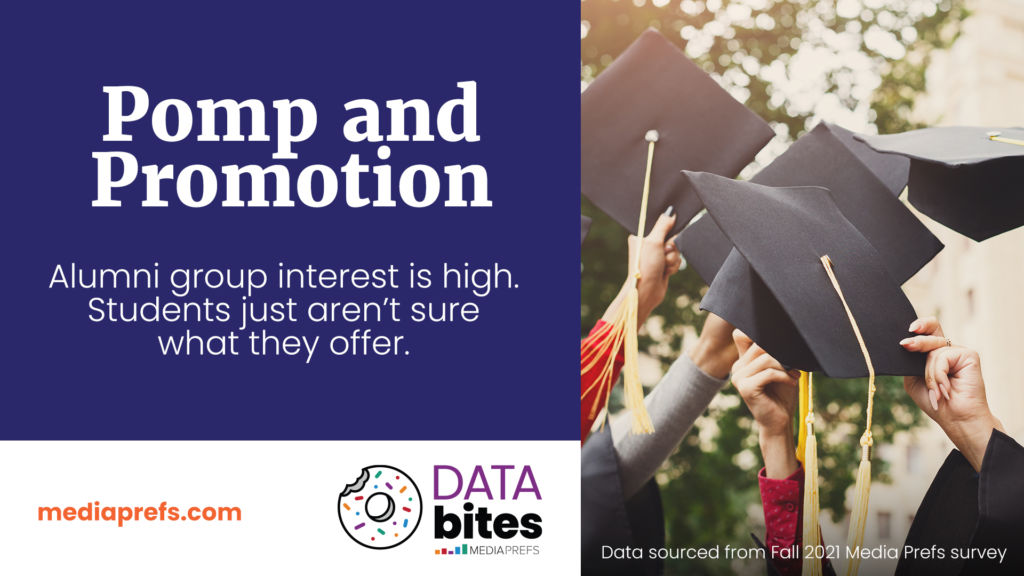
The good news is that interest in alumni groups is high. But the bad news is that students just aren’t sure of how to join, or how it would benefit them.
In general, more than half of students are interested in joining their college’s alumni group or association post-graduation.
Unfortunately, nearly three in four students are unsure if their college even has an alumni organization at all.
How can you fix the disconnect?
- Inspire current students with your alum success stories.
- Invite them to alumni organization activities.
- Show them how becoming an alum will transform their life!
“Making the connections between current and former students early and often will help keep students engaged from day one through graduation,” says Wagner.
The Inside Scoop on Smarter Marketing:
Be the First to Know the Latest Media Prefs Data in 2023!
There’s only one way to know students’ media preferences and dial in data nationally, regionally, and locally. And that’s by becoming a Media Prefs participant!
Make your marketing dollars go further and make smarter choices.

Media Prefs runs twice each academic year, and our spring survey kicks off on February 13, 2023. The survey window opens for eight weeks, which offers colleges flexibility.
The next training session starts in January, so don’t miss out!
“The upcoming training session will cover all the aspects of the survey process,” says Wagner. “We try to make it easy with promotional toolkits, a checklist, and self-service options through our brand-new portal, which is so exciting!”
Plus, our user-friendly dashboard makes it easier than ever to analyze the data across different target demographics. Excited to fine-tune your marketing plan?
“Even if you aren’t actively participating in the survey, you can still have access to all that state and regional data at your fingertips,” says Wagner.
